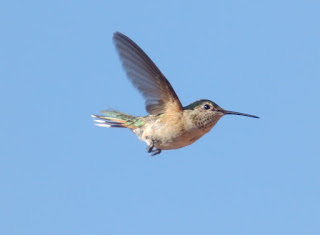Positives About Negative
Hope and help for triple-negative (TNBC) and other forms of hormone-negative breast cancer.
Thursday, March 4, 2021
Clusters of P53 Protein Mutations Offer New Treatment Potentials for TNBC
Wednesday, January 13, 2021
Women Satisfied With "Going Flat" After Mastectomy
I have "gone flat," as have many women I know. That beguiling descriptor applies to breast cancer patients like me who do not have reconstruction after a mastectomy and therefore have pancake chests. After my bilateral mastectomy in 2015, I didn't want foreign material in my body. I miss my breasts, no doubt about it. In Western culture, breasts can define us as sexual beings; without mine, I feel a tad less desirable. Breasts equal beauty and I have the profile of a pencil. But I can remedy this with bras with prostheses that are comfortable and look natural, so why sign up for additional surgery and a continued need for medical surveillance?
Many other women choose differently, especially those who are younger; I understand and respect the importance of reconstruction for their own mental and physical well-being.
But my decision to “go flat” was right for me, and new research shows I am in good company.
The great majority of women who have decided against reconstruction are comfortable with their choice, according to a study published in the Annals of Surgical Oncology. READ THE STORY HERE.
Monday, November 2, 2020
Looking for Research Participants in the UK on Building Resilience Online to Counter Psychological Effects of Breast Cancer
Worrying (thinking about how things might go badly in the future), is normal from time to time, but for most people this passes fairly quickly. However, some people find that once they start worrying, it is very difficult to stop. Research studies have shown that people who are particularly resilient experience less worry and low mood. In the present study, we hope to increase resilience and decrease low mood and worry in people who have had breast cancer. We also want to find out how people find doing the intervention via the web-platform.
For more information, and to see if you are eligible, check out The Frame Project.
Wednesday, August 12, 2020
HDAC6 Effective in Metastatic TNBC
TNBC and CDK4/6 Inhibitors
An excerpt, from Ruth O’Regan, MD. chief of the Division of Hematology, Medical Oncology and Palliative Care within the Department of Medicine and associate director of Clinical Research at the University of Wisconsin Carbone Cancer Center:
However, when you look at TNBC, there is not just 1 type of breast cancer; there are 4 to 6 different types under that triple-negative umbrella. One of them is the luminal AR subtype, which looks like a luminal ER-positive subtype genomically, but is actually ER negative and AR positive. This led to some trials looking at single-agent antiandrogens to treat these AR TNBCs. Overall, both enzalutamide (Xtandi) and bicalutamide (Casodex) produced pretty modest activity. The question become, “How could we make these antiandrogen drugs more effective in these AR-positive TNBCs?”
Need a Respite?
I had thought I was doing a decent job managing the stress of the pandemic, social unrest, my cancer advocacy and concerns, economic instability, the climate crisis, and everything that is 2020. I wasn't.
Here's how nature helped and how it might help you too.
 |
| Double rainbow on the ridge opposite my deck. |
 |
| Our hummingbird feeder attracts gorgeous guys like this. You can put a feeder just about anywhere. |
Monday, April 20, 2020
Burn Scars: A Memoir of the Land and Its Loss
Journalist Patricia Prijatel and her family built a tiny cabin in a remote Colorado mountain valley where they embraced the silent, the wild, and the beautiful—until June 2013 and the East Peak Fire. Their cabin survived, but their woodlands became a burn-scarred landscape of splintered trunks and blackened branches.
After the fire, the ruin of the land and its people grew: flash floods on eroded land, invasive weeds crowding out grass and seedlings, hurricane-level winds breaking healthy trees, dangerous orphaned animals, toxic air, and stress leading to life-threatening diseases, including a second diagnosis of triple-negative breast cancer.
Burn Scars: A Memoir of the Land and Its Loss follows Prijatel and her family through six years of living in a changed ecosystem. It’s the story of a love of the land, of hope challenging despair, of climate grief, and the birth of a climate warrior. With searing honesty, Prijatel chronicles an unprecedented transition for America's natural forests, the life they nurture, and the people witnessing their tragic loss. Her story serves as a love song, a warning, and a glimpse of the future we'll all navigate as climate change remakes the places we've loved. It's also a call to fight for a priceless treasure we can still preserve—if we act now.
"An honest and vulnerable meditation on the trauma of life in contemporary Colorado, put to the page with uncommon grace and insight. Prijatel is a compassionate guide in exploring that chaotic time. Most important, she offers hope for recovery and resilience."
Laura Pritchett, Author, Sky Bridge, winner of the WILLA Award
"An elegy and a wake-up call. Prijatel writes a deeply personal and wrenching story of loss that touches us all. Like fire, her memoir is a reckoning that urges us to examine our priorities and recognize our first allegiance is to the earth, our one true home." Karen Auvinen, Author, Rough Beauty: Forty Seasons of Mountain Living.
"A moving meditation on our connection to the land, and a potent wake up call to the devastating effects of climate change."Tanja Pajevic, Author, The Secret Life of Grief, winner of Nautilus Silver Award"
"An important story. Prijatel chronicles her personal journey of loss and climate grief that touches our collective experience. But it is also a story of healing, for as we face this crisis, we are challenged to discover a resilience within ourselves and in the generative power of nature." Leslie Davenport, Author, Emotional Resiliency in the Era of Climate Change.
Buy Burn Scars: A Memoir of the Land and Its Loss on Amazon
Get an autographed copy directly from the author.
Monday, February 24, 2020
Inflammation Caused by Radiation Can Fuel TNBC Cells: A New Road To TNBC-Specific Treatment?
From a News Release from ChristianaCare’s Cawley Center for Translational Cancer Research
While radiation is successfully used to treat breast cancer by killing cancer cells, inflammation caused as a side-effect of radiation can have a contrary effect by promoting the survival of triple-negative breast cancer cells, according to research published online in the International Journal of Radiation Biology by Jennifer Sims-Mourtada, Ph.D., director of Translational Breast Cancer Research at ChristianaCare’s Helen F. Graham Cancer Center & Research Institute.
Dr. Sims-Mourtada’s latest study shows that inflammation caused by radiation can trigger stem-cell-like characteristics in non-stem TNBC cells.
“This is the good and the bad of radiation,” Dr. Sims-Mourtada said. “We know radiation induced inflammation can help the immune system to kill tumor cells — that’s good — but also it can protect cancer stem cells in some cases, and that’s bad.”
She added, “What’s exciting about these findings is we’re learning more and more that the environment the tumor is in – its microenvironment – is very important. Historically, research has focused on the genetic defects in the tumor cells. We’re now also looking at the larger microenvironment and its contribution to cancer.”
Triple-negative breast cancer cells don’t have estrogen or progesterone receptors and also don’t make too much of the protein called HER2—cells test “negative” on all 3 tests. These cancers tend to be more common in women under age 40, who are African-American, Latina or who have a BRCA1 mutation. But older women, caucasian, those with no family history of breast cancer, and no genetic mutations can be affected.
“My work focuses on cancer stem cells and their origination,” Dr. Sims-Mourtada said. “They exist in many cancers, but they’re particularly elusive in triple-negative breast cancer. Their abnormal growth capacity and survival mechanisms make them resistant to radiation and chemotherapy and help drive tumor growth.”
She and her team applied radiation to triple-negative breast cancer stem cells and to non-stem cells. In both cases, they found radiation induced an inflammatory response that activated the Il-6/Stat3 pathway, which plays a significant role in the growth and survival of cancer stem cells in triple-negative breast cancers. They also found that inhibiting STAT3 blocks the creation of cancer stem cells. As yet unclear is the role IL-6/STAT3 plays in transforming a non-stem cell to a stem-cell.
For women living in Delaware, Dr. Sims-Mourtada’s research is especially urgent: The rates of triple-negative breast cancer in the state are the highest nationwide.
Dr. Sims-Mourtadato recently received a grant to continue investigating the role of cells immediately around a tumor in spurring the growth of triple-negative breast cancer and a possible TNBC-specific therapy.“Our next step is to understand the inflammatory response and how we might inhibit it to keep new cancer stem cells from developing,” she said.
Her research team previously identified an anti-inflammatory drug, currently used to treat rheumatoid arthritis, that has the potential to target and inhibit the growth of cancer stem cells and triple-negative breast cancer tumors. That research could set the stage for clinical investigation of the drug, alone or in combination with chemotherapy, to improve outcomes for patients with triple-negative breast cancer.
Tuesday, January 7, 2020
Researchers Starve Triple Negative Breast Cancer With Drug in Clinical Trials
Metabolic Syndrome and TNBC
Wednesday, November 27, 2019
Watch the Scary TNBC Language!!!
BUT, in the middle of the release is this utterly outrageous sentence:
Triple negatives are the worst breast cancers: they have the highest rates of metastasis, worst prognosis, and no targeted treatments.My edit
Triple negative breast cancer can be more aggressive than hormone-positive cancer, but it responds well to chemotherapy. Metastatic TNBC so far has no targeted treatment.Later in the release, they call TNBC "this most dreaded form of breast cancer."
I am livid! This is irresponsible and wrong. I was diagnosed in June 2006, 13.5 years ago. I had a second cancer in June 2015, 4.5 years ago. I'm doing fine. I didn't like the experience, but I survived, as do most women with TNBC.
Aurghhhhh.
This site is entirely volunteer. Please consider supporting this work through your donation.
Acupressure can reduce effects of breast cancer treatment.
Monday, July 8, 2019
Who Is Most Likely to Get Triple-Negative Breast Cancer?
Wednesday, June 26, 2019
Fiction Helps Me Escape to the Warmth
Saturday, June 8, 2019
Music helps soothe breast cancer pain
Saturday, April 27, 2019
Five Truths About Triple-Negative Breast Cancer That Can Give You Hope
•This site is entirely volunteer. Please consider supporting this work through your donation.
Surviving Triple-Negative Breast Cancer: Hope, Treatment and Recovery, by Patricia Prijatel. (That's me.)



